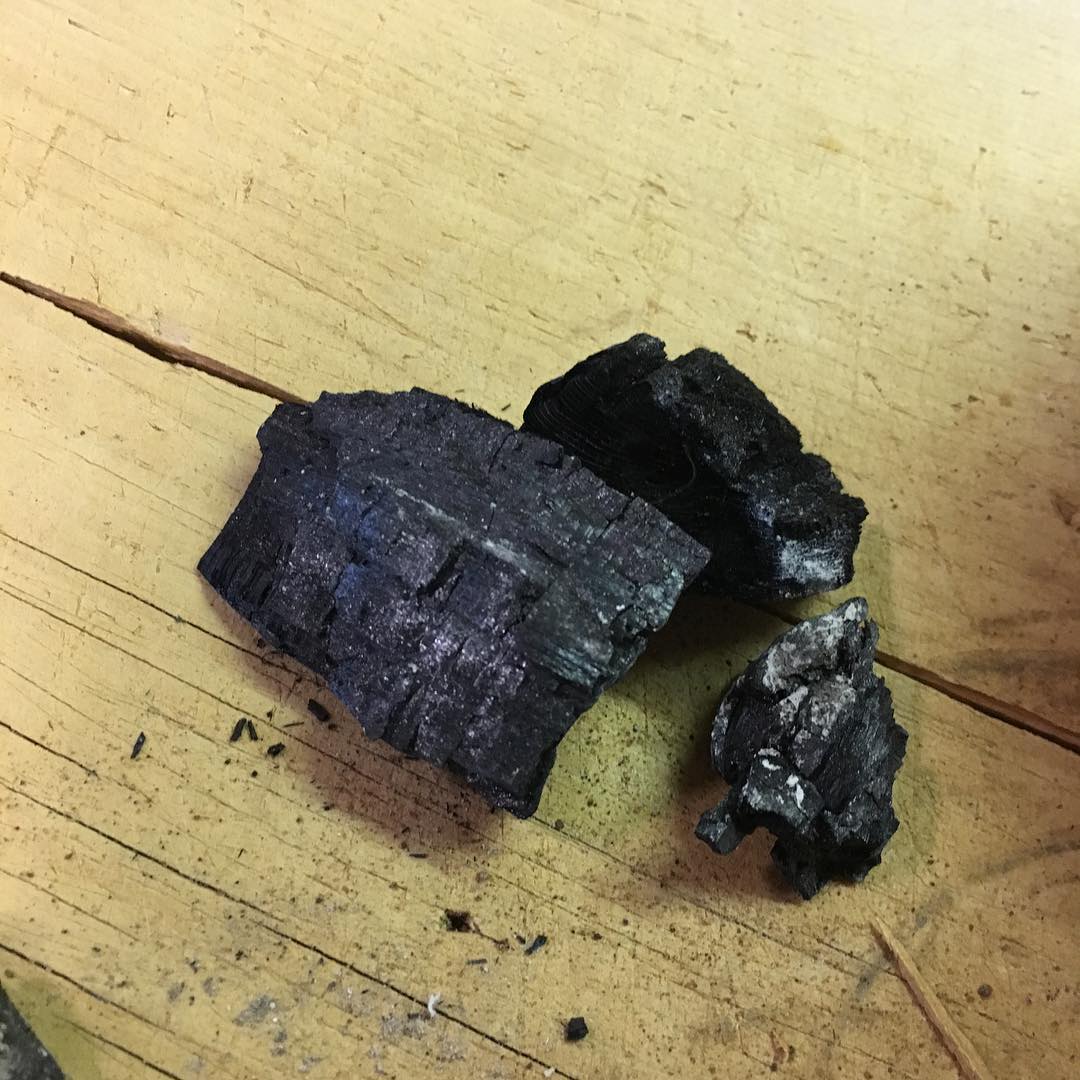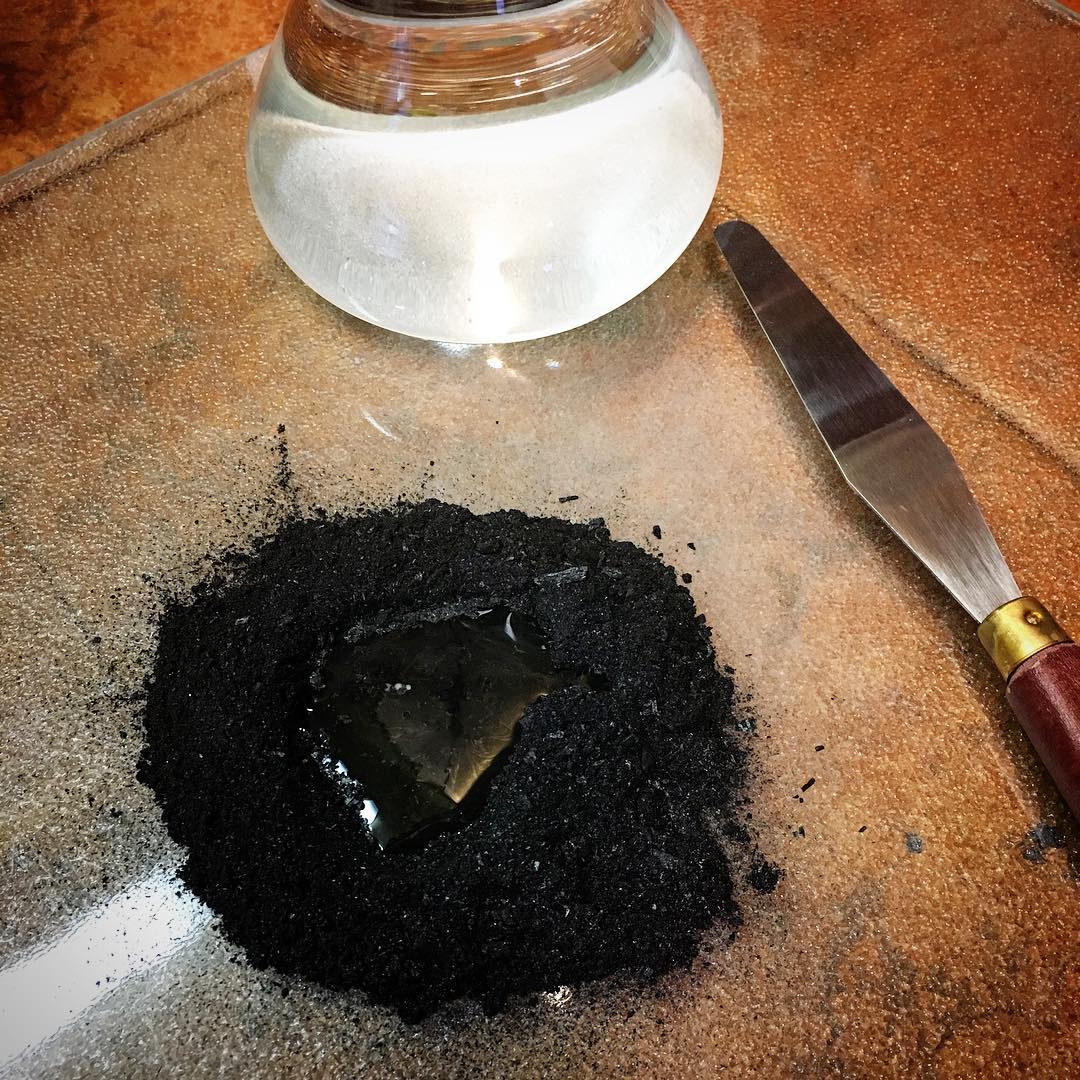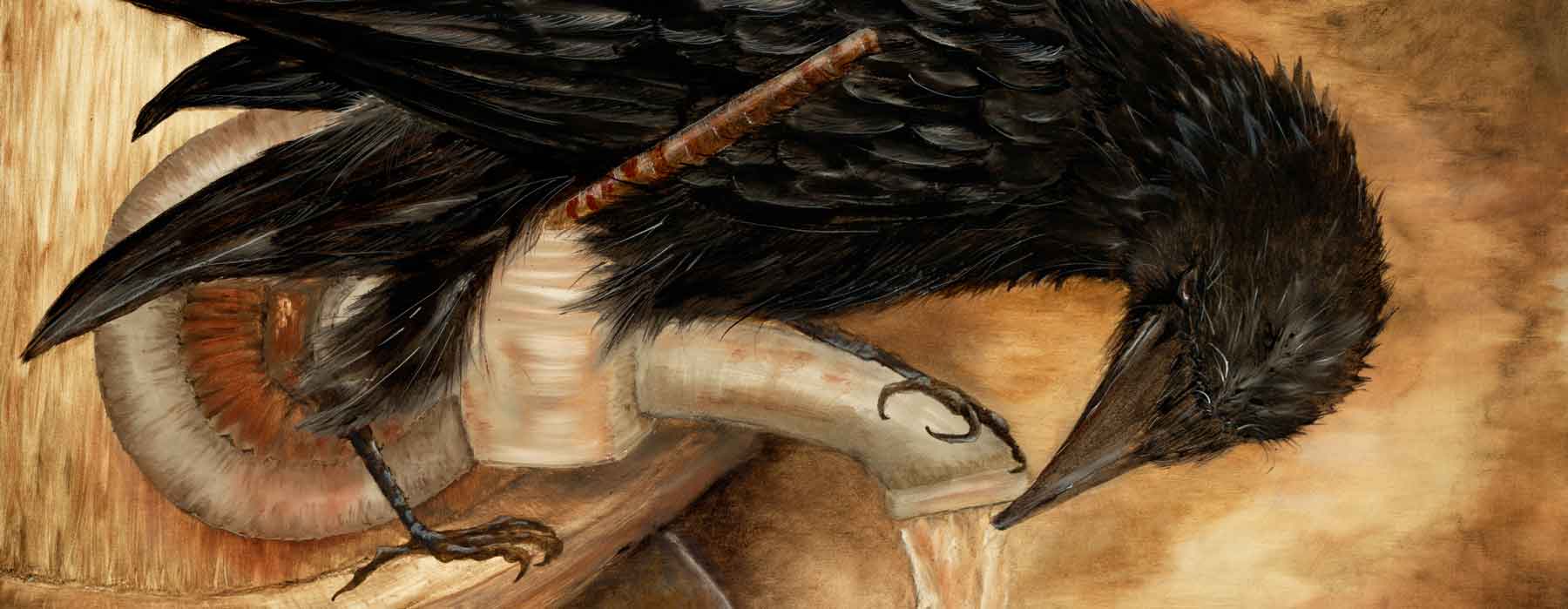Sometimes I’m overzealous with the black. More honestly put, I am almost always too generous with the black. I put more on than I need and so end up taking a lot of it right back off.
Why I love Black
And that highlights one of the great things about my black handmade watercolor paint. It comes back off.
Not all of the colors will do that. Some of them stain the paper, so even if I remove the paint there will still be the stain.
Another nice thing about this black is that it can be manipulated on the paper. I can pull out very thin lines with a lot of control in placement.
It will bleed into or blend with nearby colors, though, so you still have to use caution if that effect isn’t your intent.
The other thing I love about the color black is its metaphysical properties.
I make the black from wood char, and this year I’m going to make a special batch of black paint from the wood that I burn on Mid-winter’s Day. I’ll call it ‘Winter Solstice’. I may also burn some bones to make Bone Black.
The black made from wood char will look just like the other blacks that I make, though, so the only difference will be the metaphysical. I’m not sure if there’s going to be a difference in the bone black, because I’ve never made that one before. So we’ll see.
It’s the Hardest to Make
Sum total effort expended, I have to say this color wins hands down. With the other colors, it all starts by picking up a rock. And yes, crushing rocks is hard work.
But it doesn’t compare to procuring firewood. Even though I’m not the one doing the hardest of the labors involved with bringing wood to the wood-stove, the part I play is hard enough. If I buy a load of firewood I still have to load and then unload the truck. But when we’re cutting our own firewood, I pick up the logs as Rob splits them, load and unload the tractor bucket.
I suppose it would a LOT less effort if I only burned wood to make this paint, though. Instead I am just trying to use a by product of something else so that the heat produced isn’t wasted.
It’s a Mess to Make
It starts with a tree, in this case. You can also make black from charred bone but I haven’t done that yet.
So the mess begins with sweating. It’s warming work to do my little part of getting the firewood into our house.
But the actual paint-making begins with a lump of charred wood. The charred part needs to be thoroughly charred, with no un-burnt wood and not so burned that it is only ash.

Carbon black gets everywhere. It goes into the air if you grind it, so it’s a good idea to wear a dust mask when doing that. This time I used my blender to grind it so having a lid helped a lot. But when I poured the powder into a jar, fine clouds of black floated into the air.
If you spill any of it, it seems to get on everything and spread everywhere.
Black=Carbon=Life
Carbon is the basis for the color black, and while it isn’t the most abundant element in the universe or even the earth, it is a very abundant source of pigment for me.
The very definition of ‘life’ is often dependent on whether or not carbon is present. It is what makes ‘organic’ organic. The reason is because carbon is the basic building block for all things alive or once-living.
To read my musings on the philosophical/metaphysical aspect, read my post at the Wild Ozark blog. In summary, to me, black represents the very basic component of all that is life. The struggle to maintain the balance between black and white is what life is all about.
The Making of Black

So this was the way I made black the first time. It didn’t work very well. The ground up char doesn’t want to mull into the media the way other rock and clay powders do.
Now instead of trying to mull it, I put some of the powder into a jar and just shake it every day to transfer the color into the media. When the heavier particles sink to the bottom I keep the liquidy part and just let it evaporate out of my pans and refill the pans as often as it takes to get them full.
The key is to get enough of the powder to stain the liquid media so that the resulting paint is dark enough to be called black.

In the photo at the top of this page, you can see the little tray I’m using. I want to see if it’ll turn out dry cubes intact. If it does, I can do away with some of the plastic pans and just put these paint cubes into my tins without them.
I’ll update this post later to let you know how that worked.
Have a wonderful solstice, Merry Christmas, and Happy New Year! I’ll be at the Fayetteville Farmer’s Market this weekend and next, and most Saturdays during the winter market hours. You can check my schedule to make sure I’m there if you want at wildozark.com/schedule/.
